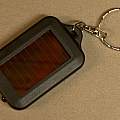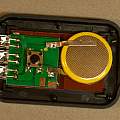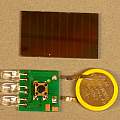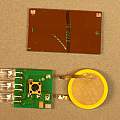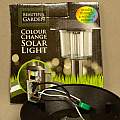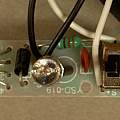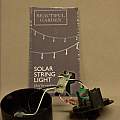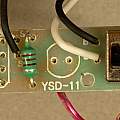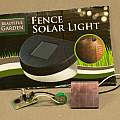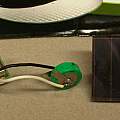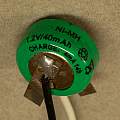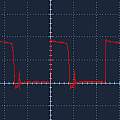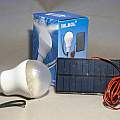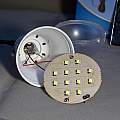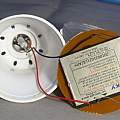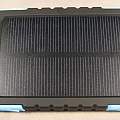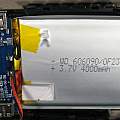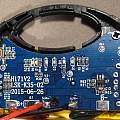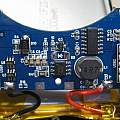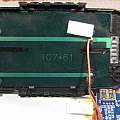A page surveying where to get solar power for wireless sensors.
The 3 LED Keyring Torch
Looking to produce a wireless temperature sensor that was solar powered (see Solar Sensor). I came upon "Solar Power Panel 3 LED Flashlight Torch Lamp Light" on ebay, I found a You Tube video of the contents:
https://www.youtube.com/watch?v=QyzHa8q5bgQ
To be fair the guy says this is one of the few he has found that are genuine, I assumed if I bought one it would be just like his, and be ideal to construct a sensor from - a 3 V rechargeable battery and solar panel.
What I got is shown below:
Photographs of 3 LED torch, click to enlarge
I found the solar panel was not connected, and the battery consisted of two non-rechargeable coin cells stuck together. As a torch it is quite good (until the batteries are exhausted). The solar panel is a reject - the power output is close to zero. It turns out this fraud has been going on for some years, and there are yards of scathing comments on Amazon marketplace.
Garden Lights
I visited Poundland and bought three different solar garden lights.
Photographs of garden lights, click to enlarge, each pair shows the box and the electronics.
There is some variation in the electronics the first two are based on the yx8018 chip, the first one going to the trouble of using a Schottky diode. The last one has the electronics under a black blob which probably works the same way as the yx8018. A similar common chip is the 5252 F.
There is good material available on the web about the yx8018 and using it:
- Detect And Zero Rightmost One - Garden Light
- The Morse Thermometer - Part 1
- The Morse Thermometer - Part 2
- The Morse Thermometer - Part 3
- Stabilized voltage converter on the chip YX8018
- Poundland Solar Light Hack
- Hacking an LED solar garden light
The principle is the solar panel charges a NiMh battery, when darkness comes the yx8018 boosts the battery voltage sufficiently to run an LED. I found the solar panels produced little power (4 mW) but they did prove effective in low light conditions. The panel on the string of LEDs was the biggest and best.
Time was when solar garden lights contained an AA size NiCd, now they come with a tiny 40 mAH NiMh cell. For comparison an AA size NiMh might store 2000 mAH, but a wireless sensor might run for 800 hours on 40 mAH, time enough for the sun to shine.
Photograph of garden light NiMh cell, click to enlarge
For a wireless sensor one of these lights provides a simple solution, use the solar panel to charge the NiMh cell and the yx8018 to boost the voltage up to the 3 V needed by the micro-controller. The above web references discuss how to do this or see Solar Sensor.
Oscilloscope trace of voltage on inductor in yx8018 circuit, 2 V and 2 µs per division, click to enlarge
A Camping Light
The next idea was to find a solar powered light with a lithium battery in. There are some "security lights" (outdoor house lights triggered by a passive infrared sensor), but I found "Portable Solar Power LED Bulb Lamp Outdoor Lighting Camp Tent Fishing Light" on ebay after seeing a similar light on Big Clive's You Tube channel. A decent solar cell and a lithium battery, although the latter looks like it has been salvaged from an old mobile phone. The protection circuit built into the battery is used to regulate charging.
Waterproof 5000 mAh Dual-USB Solar Power Bank Battery Charger
This looks good. As the light level on the solar panel increases a green LED comes on - which seems like a bad idea - and it is - for modest light levels the battery discharges at a rate of 0.1 mA. There's no attempt to boost the solar panel voltage level to charge the lithium battery; charging only starts when the solar panel output voltage is high enough. A single click fires up the 5 V boost converter and the current drawn goes to 60 mA (with no load). A double click turns on a white LED for torch like purposes (using around 5 mA); another double click turns it off. Immediately visible is that the battery is marked 4000 mAh.
All that translates as for six months of the year in England, you can stand in daylight, see the little green LED glowing and fondly imagine the battery is recharging when it is actually running down. What they should have done is use a low power boost converter like the Mark 1 solar powered wireless sensor boost converter.
